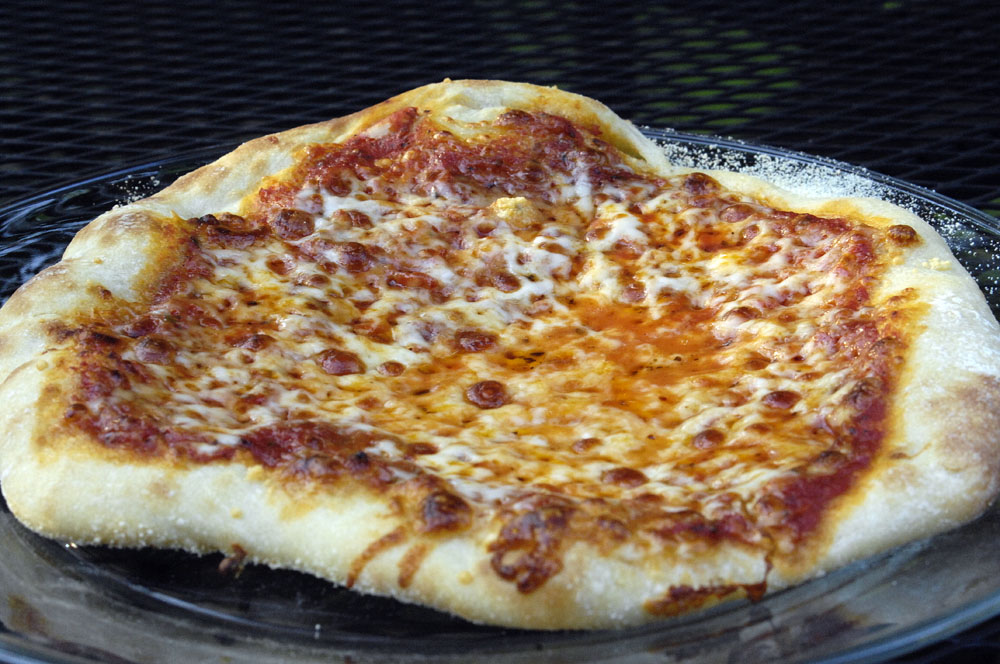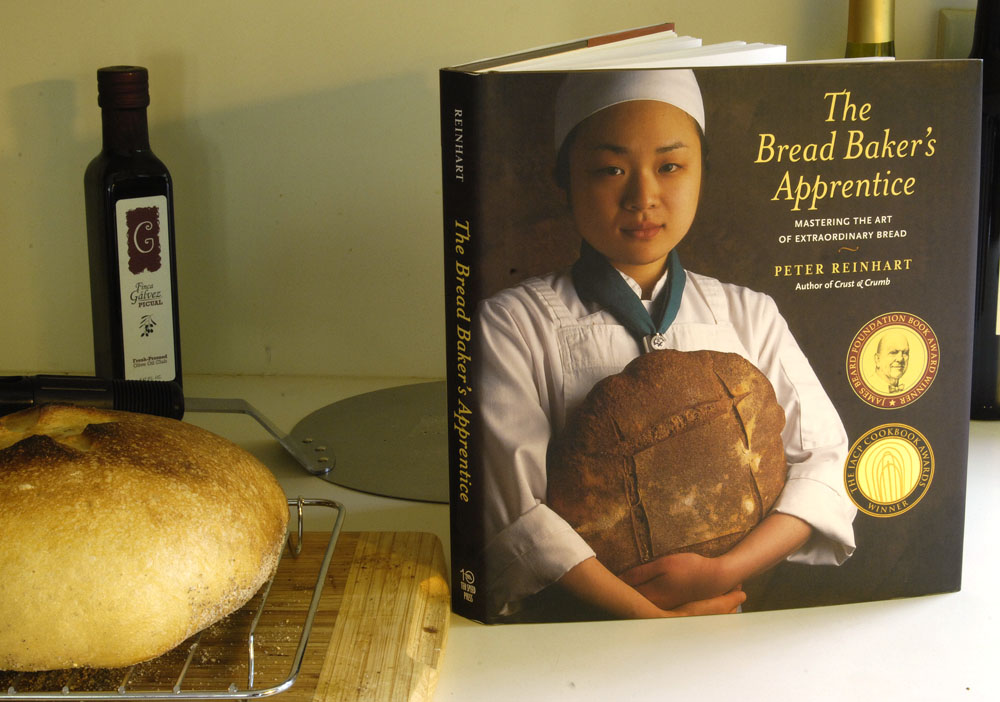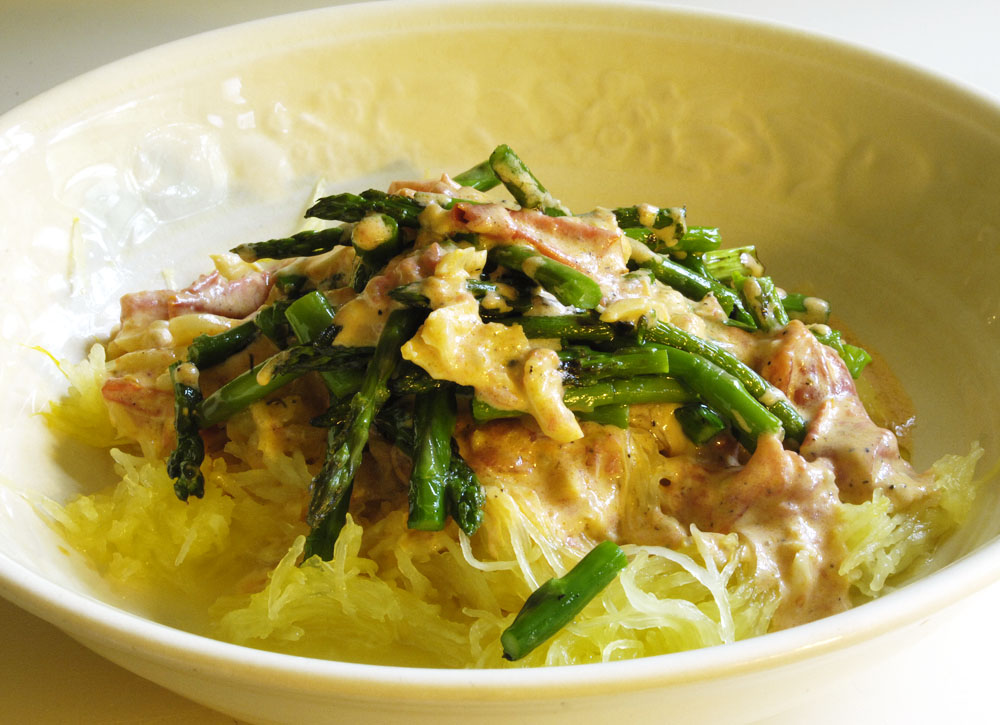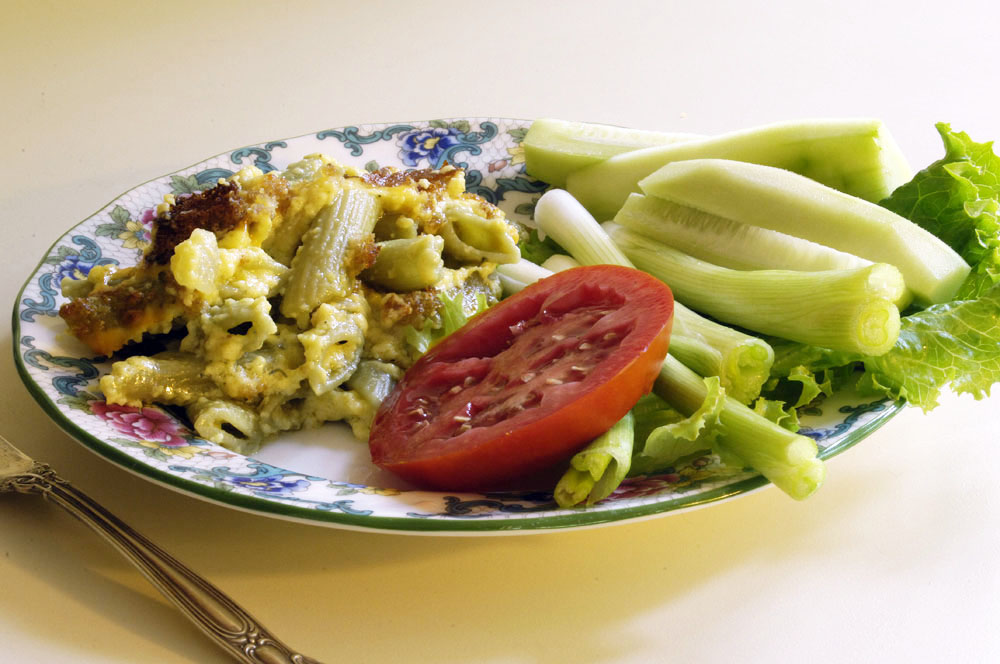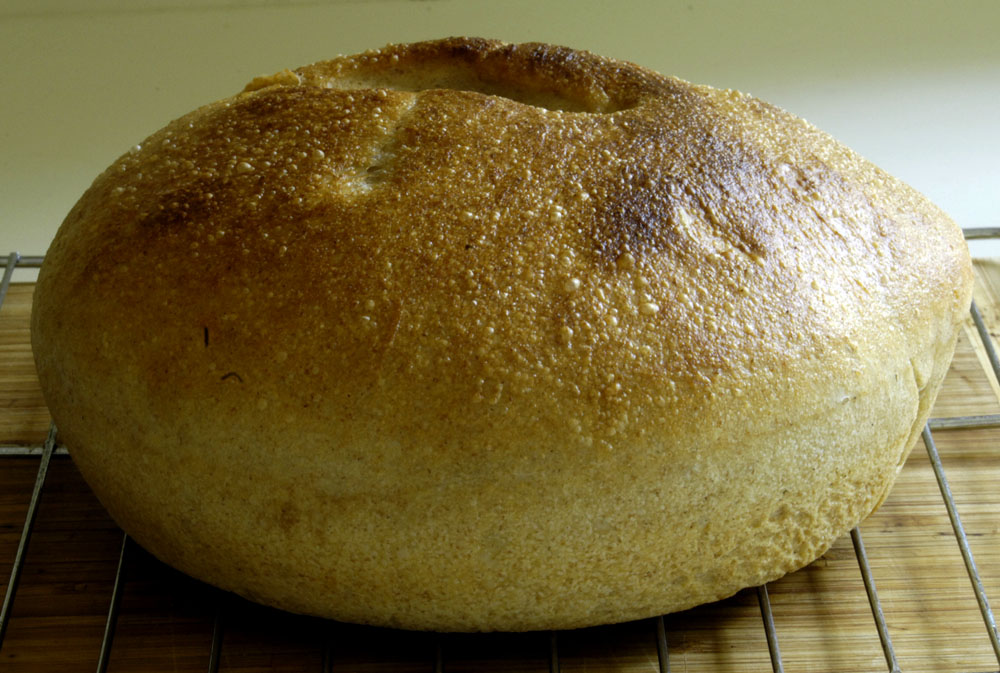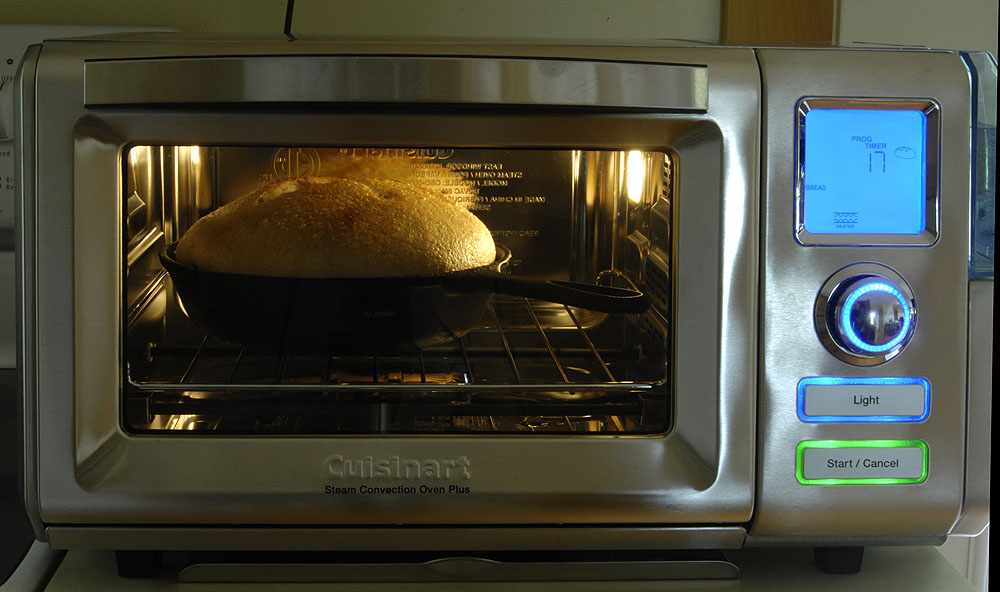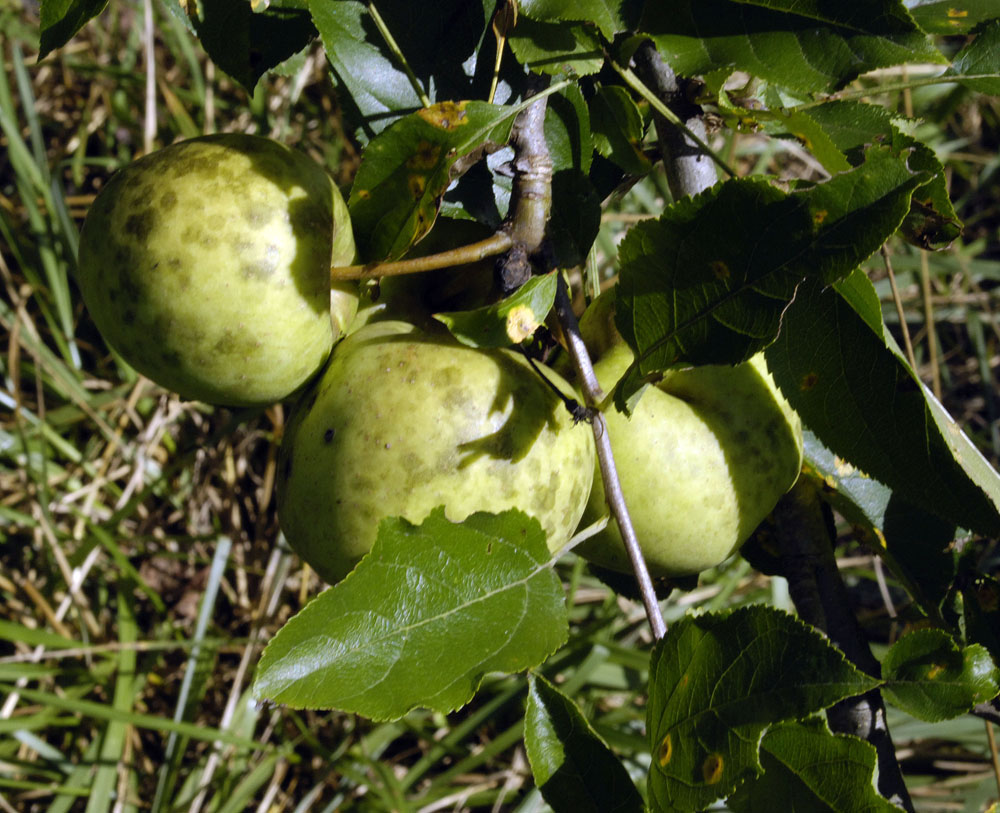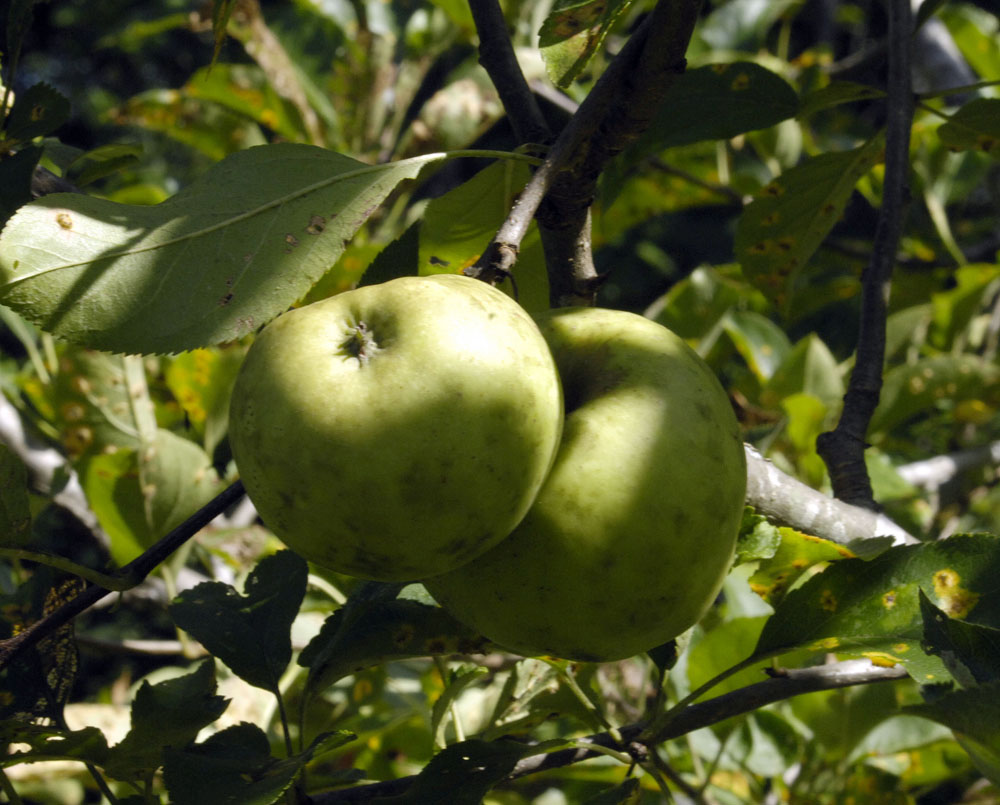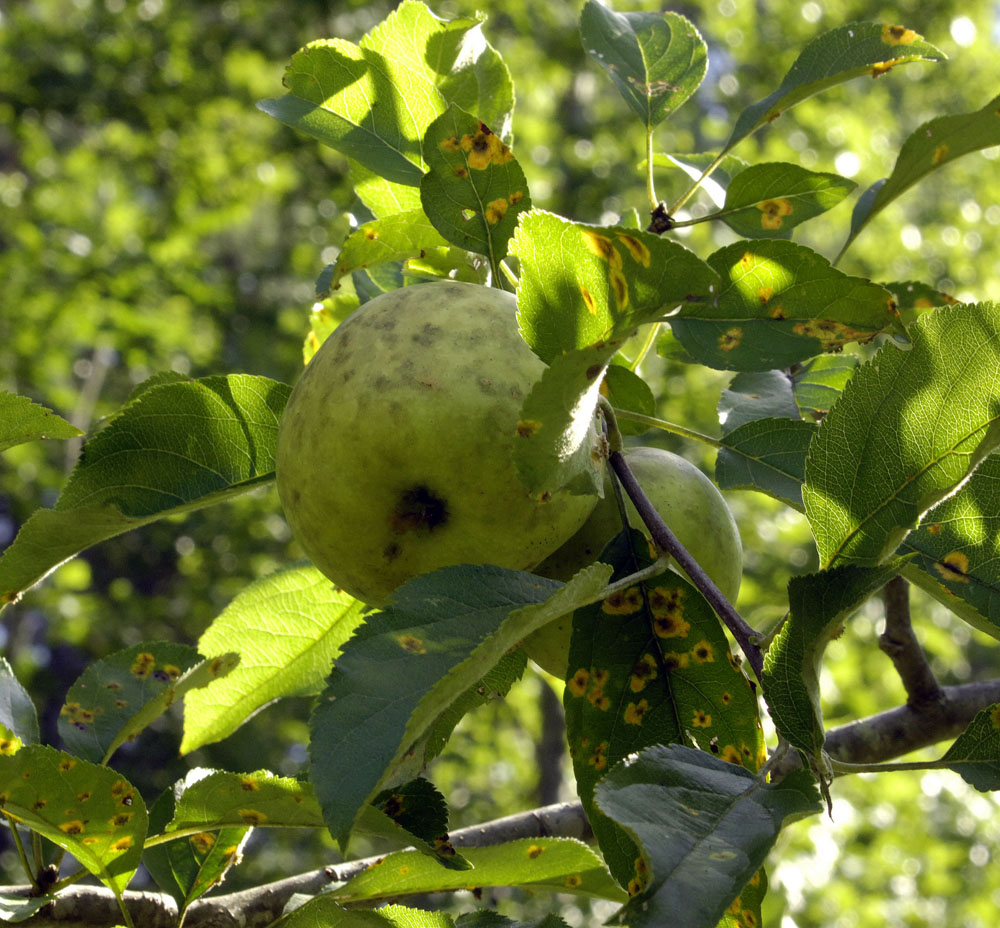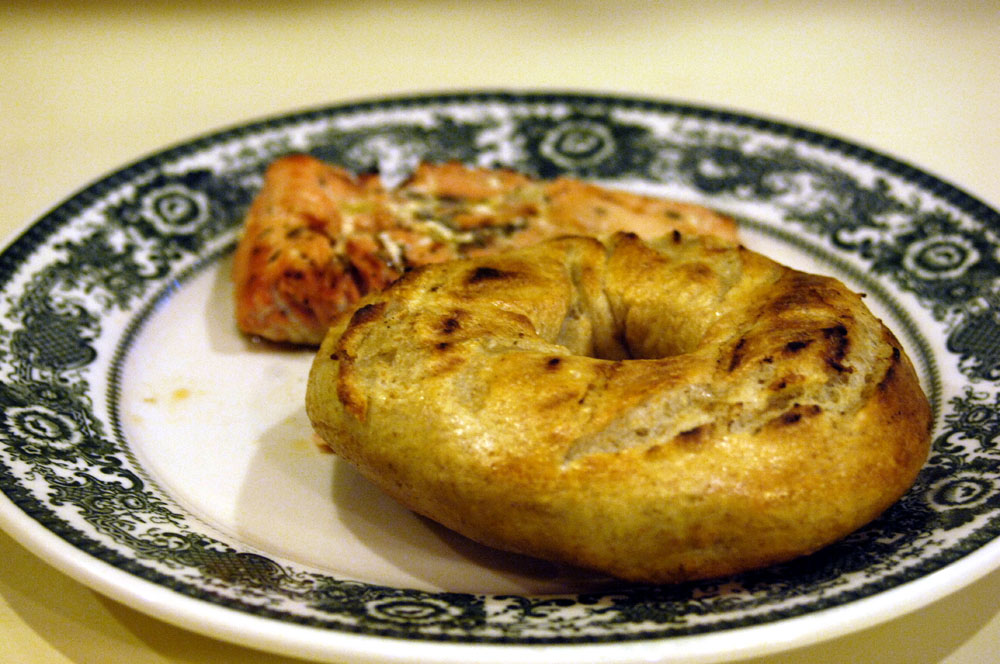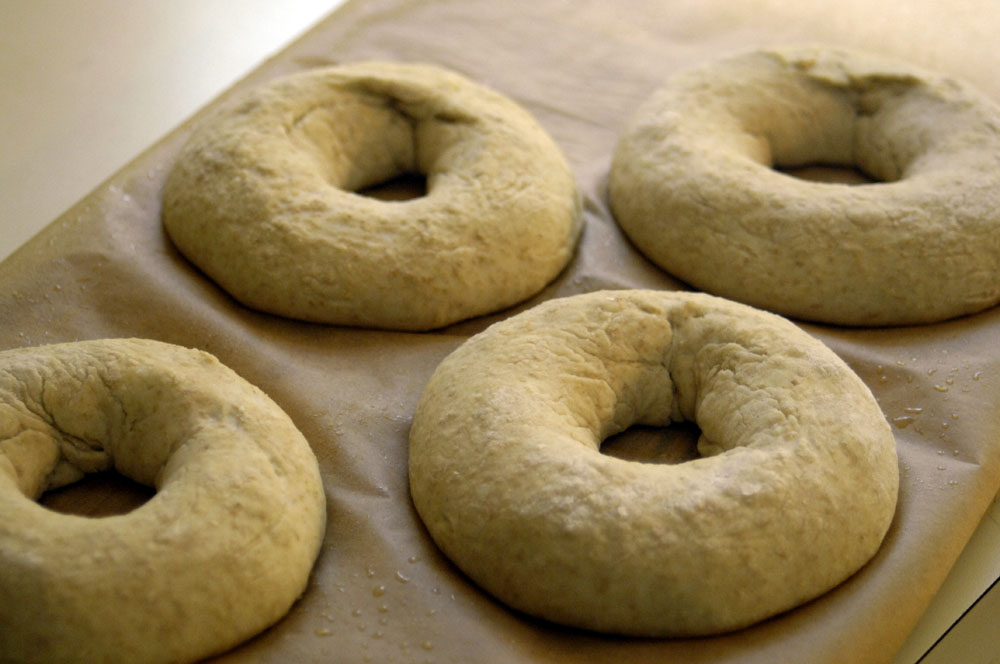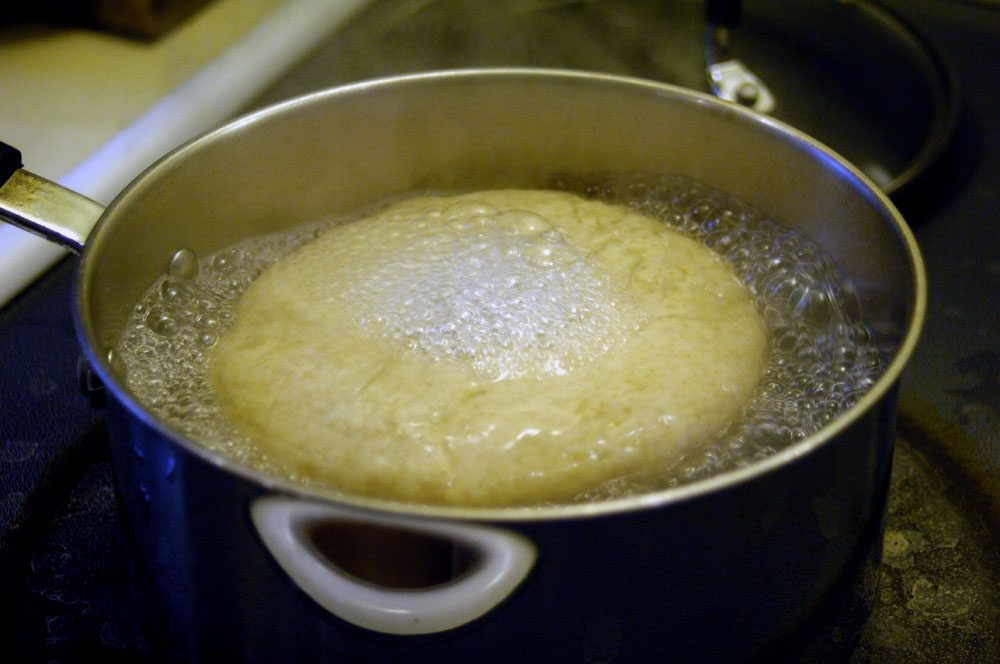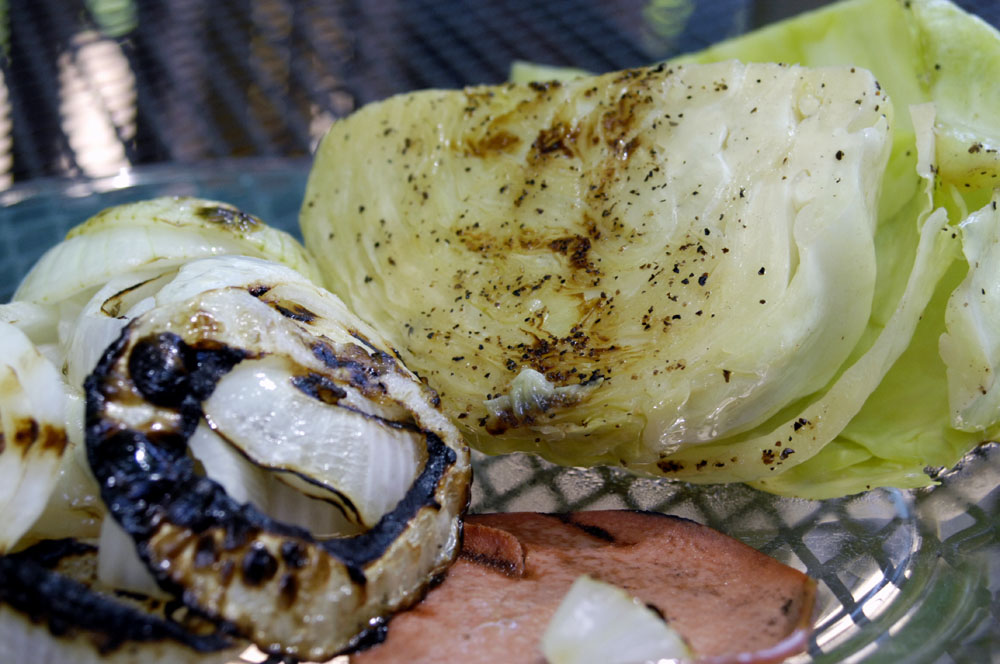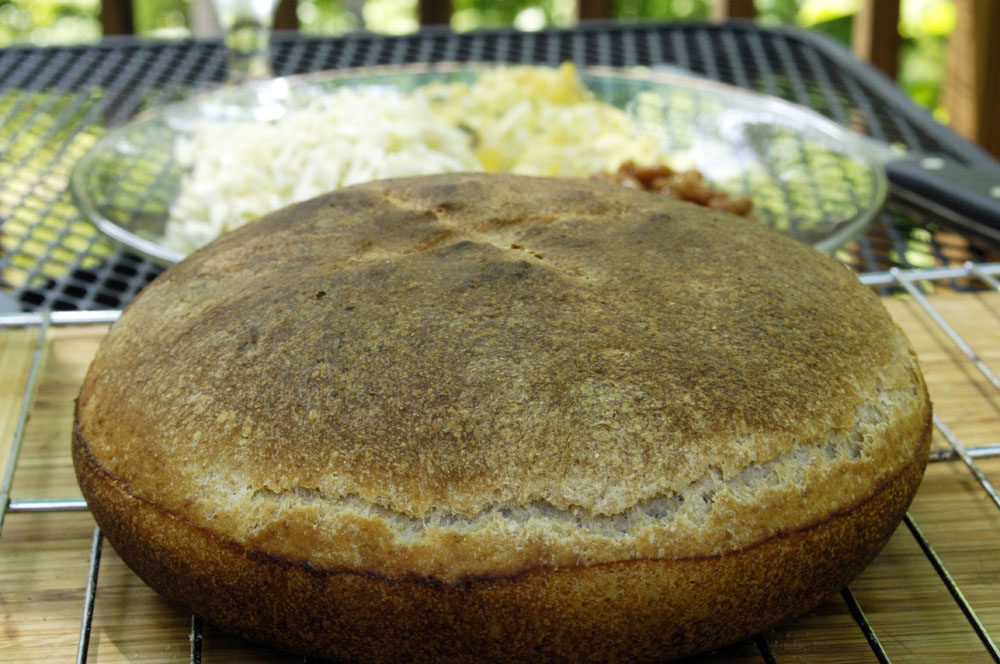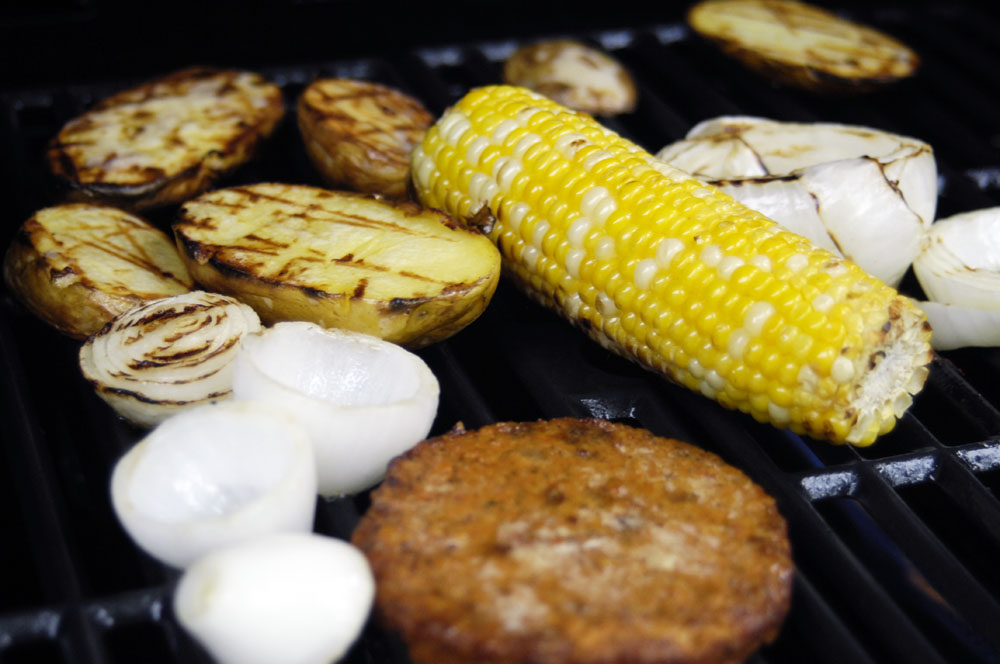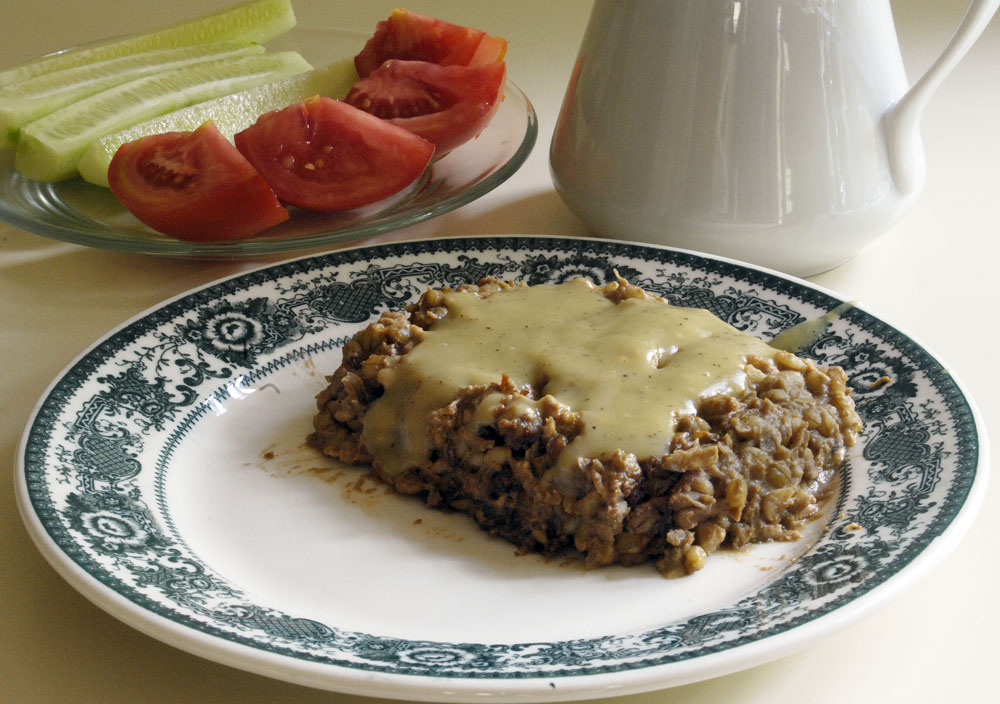
I almost never post recipes here, mostly because I rarely write down recipes of my own concoction. However, I’ve written down an approximate recipe for my vegan meat loaf. It’s a very healthy, low-glycemic, high-protein dish that keeps well and makes great leftovers. The intent is not to make a meat analog and trick anyone into thinking they’re eating real meat loaf. Rather, the intent is just to make a good vegetarian main course. It’s also a low-cost dish. Most of the ingredients can be bought in bulk. I usually think of it as a winter thing, but with the small steam oven I can make it in the summer without dumping too much heat into the house.
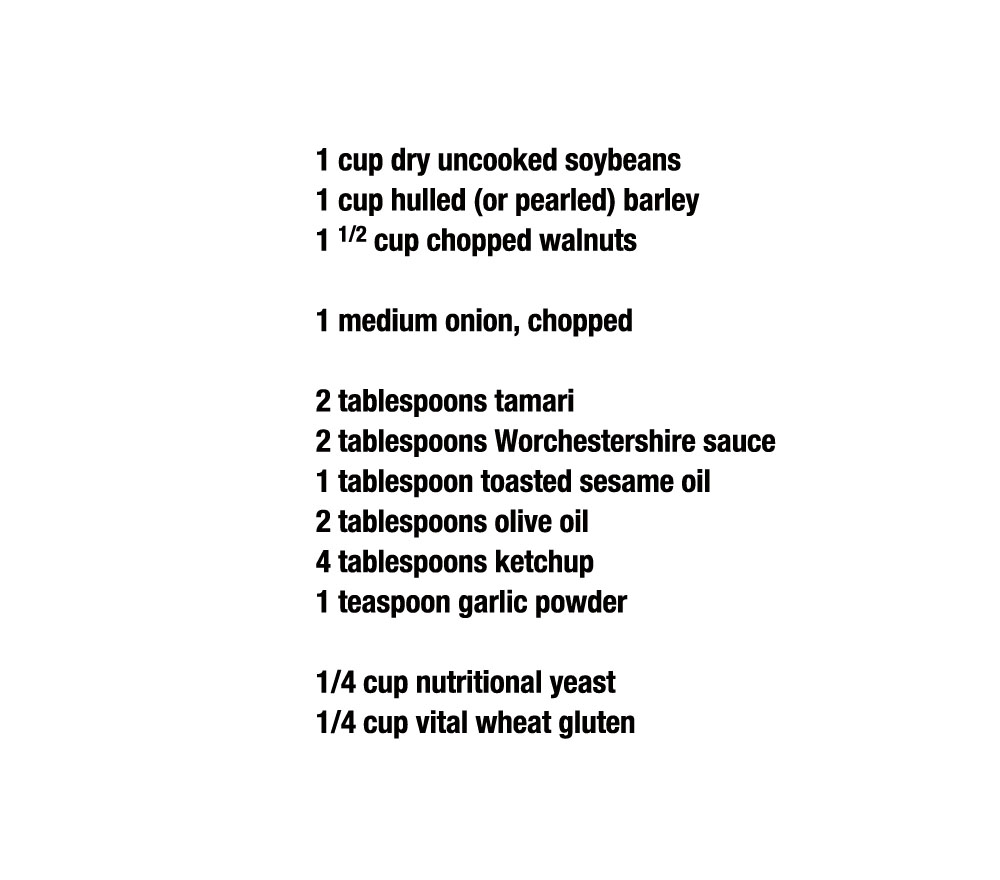
Soak the soybeans overnight. Cook them according to any recipe for cooking soybeans. I usually cook them in the pressure cooker. Drain the beans but reserve the liquid.
Soak the hulled barley overnight. (Pearled barley does not need soaking.) Cook the barley according to any recipe for cooking barley.
Coarsely chop the walnuts. Chop the onion fairly fine. Mash the soybeans with a potato masher. Mix all the ingredients in a big bowl. Use good judgment about whether the mixture looks too dry. When it’s finished baking, you want it to be firmly set in the pan but not too dry. If the mixture looks too dry, add a tablespoon or two of the soybean cooking water.
Put the mixture in an oiled bread loaf pan. Drizzle the top with oil. Cover the pan with foil. Bake it for about an hour in a 325-degree oven. It should be sizzling, moist, firm, and not too crusty when it comes out of the oven.
Serve it hot and sauce it with brown gravy.
If you like this dish enough to make it a second time, then alter the recipe to suit your taste. I like the texture and chewiness of the walnuts and barley. If you’d prefer a texture more like a paté, then you can use a food processor. Vary the seasonings. Make it more sassy by substituting more Worchestershire sauce for some of the tamari. Try curry paste or harissa instead of ketchup. Consider adding some herbs, or an egg. This a basic recipe that you can customize for your family’s tastes. You can modify this recipe to make a breakfast sausage by diminishing the amount of barley and walnuts, increasing the amount of wheat gluten, and seasoning it with sausage spices such as sage and pepper. As sausage, keep the mixture in the refrigerator, and fry in it patties for breakfast. It’s the combination of barley and wheat gluten that give the loaf its meaty chew. Experiment with the proportions of the ingredients to get a texture you really like.
Too much of it left over? Ran out of leftover gravy before you ran out of meat loaf? Use it to stuff peppers or to make cabbage rolls. Or reshape the leftovers into burgers and fry them. Use it in, say, a layered squash and cheese casserole the way you might use ground beef.
We’d all benefit from eating more barley — especially hulled barley, which is a whole grain. If you read up on barley, you’ll find that it has a very good influence on the digestive system. The gladiators were sometimes called “barley eaters.” The ancient Greeks also ate a lot of barley. If you’re not an experienced barley eater, start with pearled barley before you work up to the much more rustic hulled barley. We all know that walnuts are good for us. Soybeans are an excellent, cheap source of protein. I can’t imagine eating soybeans as a solo dish, but they go well with other hearty ingredients. The combination of amino acids in seed, legume and nuts (barley, soybeans, and walnuts) make a high-quality vegetarian protein.
Serve it with any vegetable. This is a dish with which you definitely won’t want any bread. Maybe that’s why I made it today — to deal with my temptation to make more sourdough bread.

